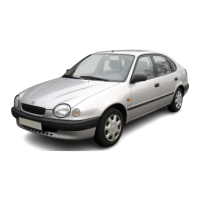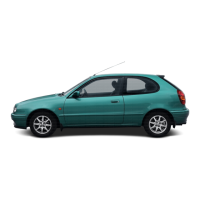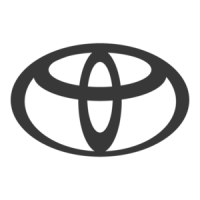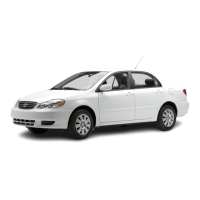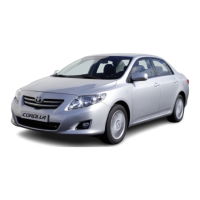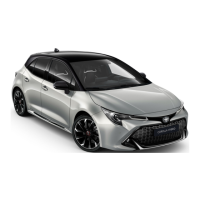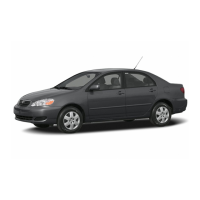25
If the seat belt cannot be pulled out of the
retractor, firmly pull the belt and release it.
You will then be able to smoothly pull the
belt out of the retractor.
When a passenger’s shoulder belt is com-
pletely extended and is then retracted
even slightly, the belt is locked in that posi-
tion and cannot be extended. This feature
is used to hold the child restraint system
securely. (For details, see “Child restraint”
in this chapter.) To free the belt again, fully
retract the belt and then pull the belt out
once more.
CAUTION
!
After inserting the tab, make sure
the tab and buckle are locked and
that the belt is not twisted.
Do not insert coins, clips, etc. in
the buckle as this may prevent you
from properly latching the tab and
buckle.
If the seat belt does not function
normally, immediately contact your
Toyota dealer.
Seat belts with an adjustable shoulder
anchor—
Adjust the shoulder anchor position
to your size.
To adjust the anchor position, pull the
knob out and slide it up or down. Release
the knob and make sure the anchor is
locked in position.
CAUTION
!
Always make sure the shoulder belt
is positioned across the center of
your shoulder. The belt should be
kept away from the neck, but not
falling off your shoulder. Failure to
do so could reduce the amount of
protection in an accident and
increase the chance of injury.
Adjust the position of the lap and
shoulder belts.
Position the lap belt as low as possible on
your hips—not on your waist, then adjust
it to a snug fit by pulling the shoulder por-
tion upward through the latch plate.
CAUTION
!
High-positioned lap belts and
loose-fitting belts both could in-
crease the chance of injury due to
sliding under the lap belt during an
accident. Keep the lap belt as low
on your hip bone as possible.
For your safety, do not place the
shoulder belt under your arm.
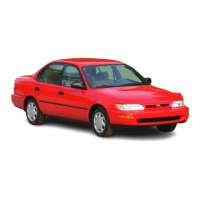
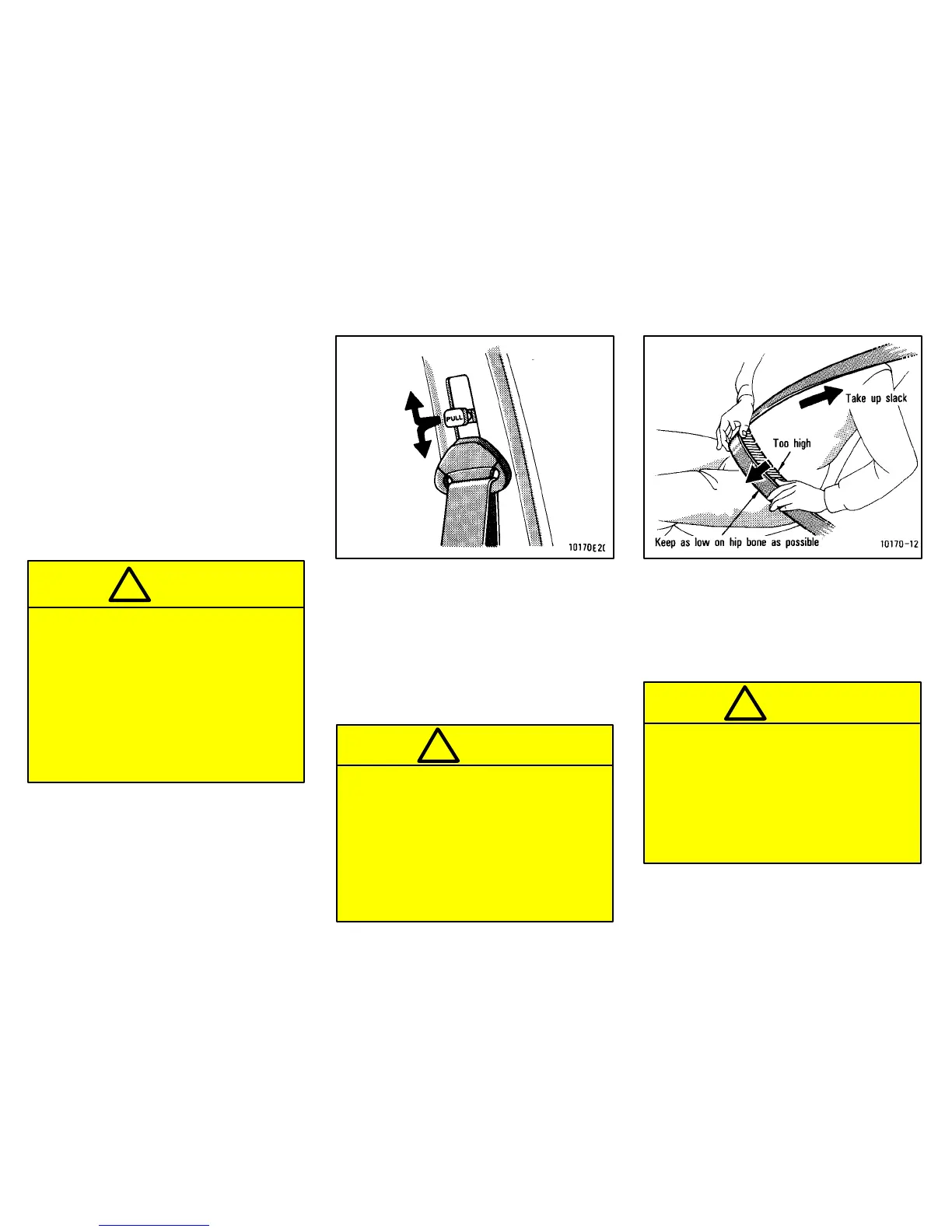